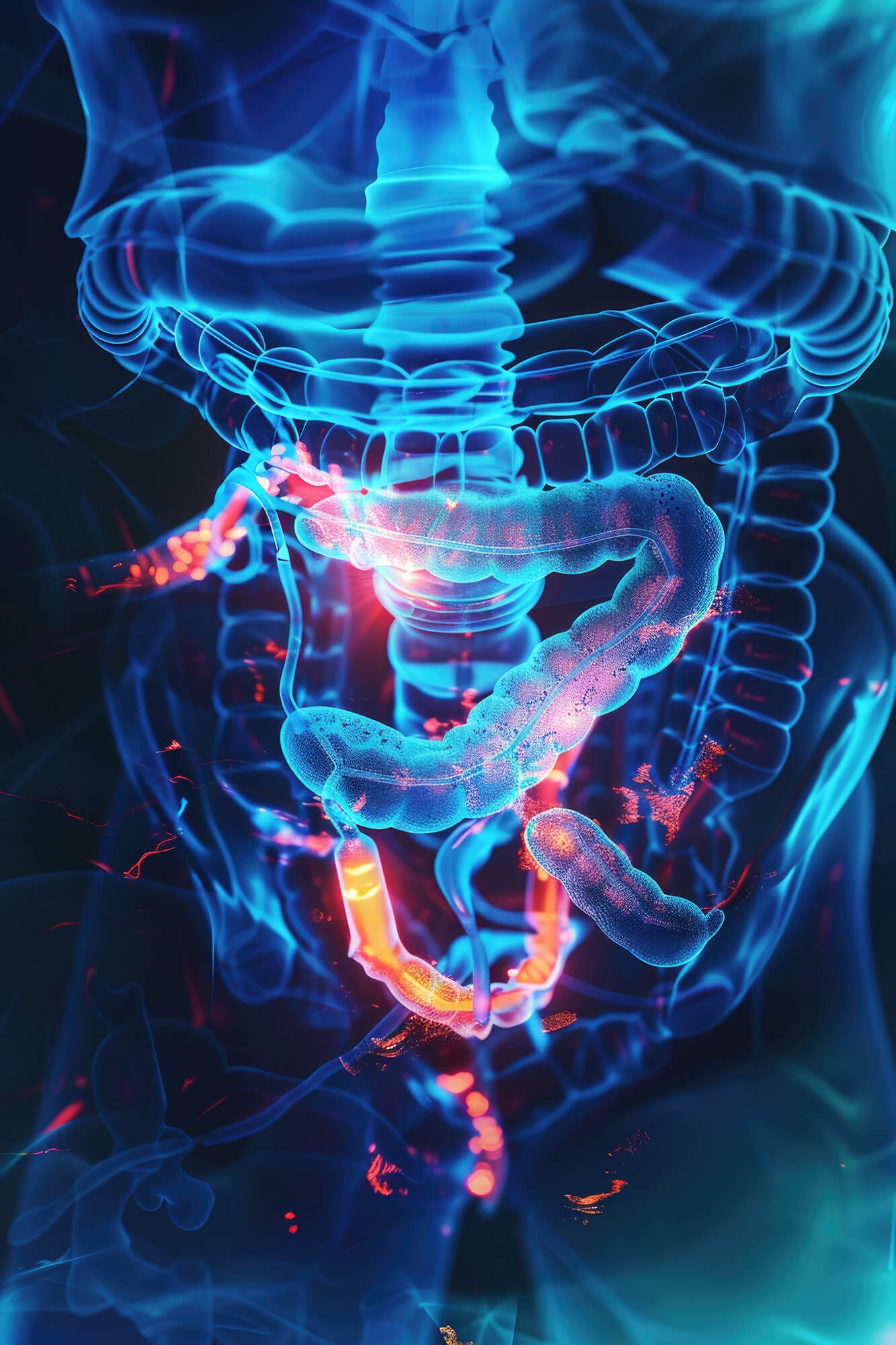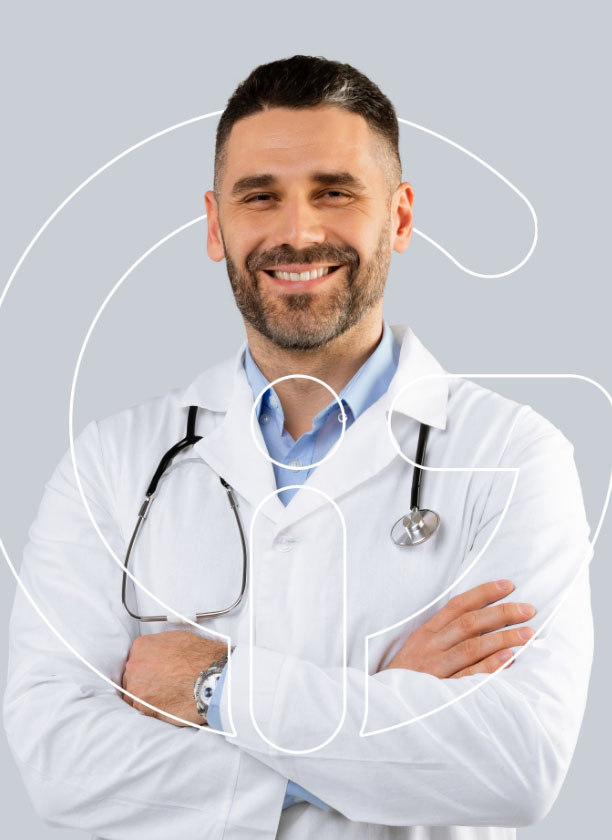What is an enteroscopy?
An enteroscopy is an endoscopic procedure where a long, thin, flexible tube or “scope” is placed into the mouth and advanced to the jejunum (the second portion of the small intestine). The scope has a light and a camera on the end of it which allows the physician to examine the lining of the esophagus, stomach, and small intestine. An enteroscopy may be performed to diagnose the cause of gastrointestinal symptoms such as abdominal pain, bleeding, or abnormal x-ray results. If you have been told you need an enteroscopy, you can contact an expert gastroenterologist through GI Alliance to learn more about the procedure.

Why is an enteroscopy performed?
An enteroscopy is most commonly used to diagnose abnormalities or diseases in the small intestine. Those abnormalities or diseases may include:
- Unexplained diarrhea
- Abnormal growths or tumors in the small intestine
- Unexplained bleeding
- Abnormal x-ray results
To an extent, the alternatives to the exam will depend on the reason for needing to undergo the enteroscopy in the first place. In most cases, enteroscopy is the best method to evaluate and treat abnormalities in the upper GI tract, especially if they involve the second portion of the small intestine or jejunum. However, an x-ray called an upper GI/small bowel follow-through can evaluate the upper GI tract as well. This is however only a diagnostic exam. Treatment of abnormalities will require an enteroscopy or surgery.
What should I expect the day before my enteroscopy?
You will receive instructions from your doctor regarding the necessary preparation. Most patients will be allowed to eat normally the day before the exam. Patients will be instructed not to take anything by mouth after midnight except for medications. It is very important to follow the instructions given to you by your doctor. There will also be additional instructions regarding your medications. In most cases, your medications will be continued as usual. However, in certain circumstances, especially in patients on blood thinners and in diabetics, special instructions will be given.
What happens on the day of my enteroscopy?
You will be asked to arrive at the endoscopy center 1 to 1.5 hours before your exam. This is to allow time to fill out paperwork and prepare. You will be asked to change into a medical gown. An intravenous (IV) catheter will be started in your arm so that sedation can be administered. You will be connected to equipment that will allow the doctor and staff to monitor your heart rate, blood pressure, pulse, electrocardiogram, breathing, and oxygen level during and after the exam.
Once in the exam room, you will be asked to lie on your left side on the stretcher. The IV sedation will be started. Small amounts are given at a time to ensure that you do not have any reaction to the medication and to provide only the amount that you need individually. Once an adequate level of sedation is achieved, the endoscope will be gently inserted into the mouth. The scope will be carefully advanced through the esophagus, stomach, and small intestine. A small amount of air is injected through the scope into the gastrointestinal (GI) tract to help the physician see. Any fluid remaining in the upper GI tract is suctioned out through the scope. Depending on the findings of the exam, several things can be done at the time of the procedure including biopsies, removal of polyps, and control of bleeding. At the end of the procedure, as much of the air and remaining fluid as possible is suctioned out through the scope. Depending on the findings, the exam takes approximately 15-45 minutes.
After the exam is complete, the patient is taken to the recovery room to be monitored while the sedation starts to wear off. The amount of sedation used during the exam and the patient’s individual response to the medication will dictate how quickly the patient wakes up, though most patients are awake enough for discharge within 45-60 minutes. You will not be allowed to drive for the rest of the day; therefore, you will need to arrange for a ride home. You will also be instructed not to work, sign important papers, or perform strenuous activities for the rest of the day. Most patients are able to eat and drink normally after their discharge from the Endoscopy unit, however, specific instructions regarding activity, eating, and medications will be given to the patient prior to discharge.
After the exam, your GI Alliance team will go over the findings of the procedure with you. Most patients will not remember what they are told after the exam because of the effects of the sedation. It is recommended, if possible, to bring someone with you to whom the results can also be discussed. The patient will also go home with a typed report. The patient will be informed of any biopsy results usually within one week.
What are the risks of an enteroscopy?
In general, enteroscopy is a very safe procedure. Overall, complications occur in less than 1% of patients. Most complications are not life-threatening, however, if a complication occurs, it may require hospitalization and surgery. Prior to the exam, a consent form will be reviewed with the patient by the nursing staff. Should any questions or concerns arise, these can be discussed with your physician prior to beginning the procedure.
Medication reactions associated with the sedation can occur. These can include but are not limited to allergic reactions, difficulty breathing, effects on the heart and blood pressure, and irritation of the vein used to give the medication. Bleeding can occur with biopsies, removal of polyps, and with dilating strictures. Again, significant bleeding which might require a blood transfusion or hospitalization is very uncommon. Perforation or puncture of the esophagus, stomach, or small intestine can occur. This may be recognized at the time of the exam, or it may not be apparent until later in the day. In most cases, a perforation will require surgery and hospitalization. This is an uncommon complication, even when biopsies are taken or dilation is performed. It is very important that the patient contact the doctor’s office immediately if symptoms arise after the procedure such as worsening abdominal pain, bleeding, or fever.
Like any other test, enteroscopy is not perfect. There is a small, accepted risk that abnormalities including cancers can be missed at the time of the exam. It is important to continue to follow up with your doctors as instructed and inform them of any new or persistent symptoms.

Diagnostic tools for better GI health
Enteroscopy FAQs
What should I not do after my enteroscopy?
After an enteroscopy, you should refrain from eating or drinking until instructed by your doctor and follow any medication guidelines provided. Additionally, you should avoid strenuous physical activity and call our office if you experience any severe abdominal pain, persistent bleeding, or fever.
Who should not have an enteroscopy?
Enteroscopy may not be recommended for individuals with certain medical conditions or factors that increase the risk of complications. Patients with severe heart or lung disease, uncontrolled bleeding disorders, or recent heart attacks may not be suitable for enteroscopy due to the risks associated with sedation and the procedure itself. Additionally, individuals with anatomical abnormalities or strictures in the digestive tract may also be advised against undergoing enteroscopy. It’s essential to discuss any existing health conditions or concerns with your healthcare provider to determine if enteroscopy is appropriate for you.
What is the main difference between an endoscopy and an enteroscopy?
The main difference between an endoscopy and an enteroscopy lies in the portion of the digestive tract they examine. While both procedures involve the use of a flexible tube with a camera (endoscope), an endoscopy typically examines the upper gastrointestinal tract, including the esophagus, stomach, and duodenum. On the other hand, an enteroscopy specifically focuses on visualizing the small intestine, which is deeper within the digestive system and more challenging to access. Enteroscopy is often used when other diagnostic tests like endoscopy or colonoscopy have not provided clear results or when there is a suspected issue in the small intestine.
